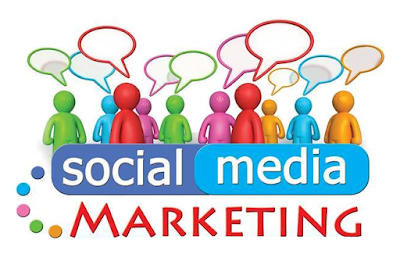ELEMENTS OF A LANDING PAGE
Landing pages are an essential part of lead
generation, as they are a primary tool to gather contact information from
visitors and increase conversions. A powerful landing page simplifies the offer
process and eliminates distractions, so the design of your landing page is key
to its effectiveness. When visitors land on your page, they should be able to
quickly understand the page and how it will be valuable to them. It requires a
different strategy than that of other pages on your site, so we’ve outlined design
tips for a landing page that converts.
Consistent
branding and logo
It’s important for your landing page to look like it
belongs on your website. This doesn’t mean it needs to look exactly like the
rest of your website or have a complex design – in fact, simple is best when it
comes to landing pages – but they should have consistent branding. Having your
company logo at the top of every landing page ensures that visitors know where
they are and who is providing the content.
Negative
space and limited navigation
To achieve the goal of your landing page, you should
make clear for visitors the action you want them to take and how to get there.
Avoid cluttering the page. There should be a significant amount of negative
space to make the page elements and their hierarchical relationship clear. This
will guide the user to your call-to-action. Unlike websites where there are
multiple journeys for a user to take, a landing page should have a specific
path for the user to take to easily accomplish the actions you’ve anticipated.
Since you want to keep the user on a specified journey, it’s also best to
exclude any exit links and to limit navigation. Having a menu and other
secondary links may lead users to abandon the landing page.
Clear,
compelling headline
Your headline should be clear, direct and explain
exactly what the offer is. It should also be consistent with the copy that was
used in the original call-to-action or email that promoted the landing page.
The headline is usually the first thing visitors see when they land on your
page, so it should be catchy and attention-grabbing but still clearly state the
purpose. As a complement to the heading, a sub-headline should be written to
persuade the user to stay on the page and encourage them to take action.
Premium
offer
Landing pages should promote a premium offer that
your visitor receives in exchange for providing information in a form. The
offer could be premium content like a whitepaper, eBook, report or webinar, or
another type of offers like a free trial, demo or free consultation.
Enticing
visuals or video
Content including images improves engagement and can
make your offer more exciting. Images and icons on your landing page could be
interactive, tell a story, or even give directional cues that point a visitor
towards your call-to-action. Videos should be strategically placed on the page
with a good thumbnail and have a clear call-to-action. Be sure to keep your
videos short, as users are then more likely to watch the whole video. It can
also be optimized for SEO and help your search engine ranking! Just be sure
that all multimedia is purposeful and pointed to the desired user behavior,
which is usually a call to action to submit a form.
Simple,
direct copy
Your landing page copy should be short and to-the-point,
and it should be relevant to the call-to-action. It should explain exactly what
the prospect will learn or what value they will receive from your offer. Bullet
points or bolded words are a great way to get your point across quickly. Use
benefit-oriented language that speaks directly to your visitors, and while the
copy should be concise, you can also personalize it so it’s less generic.
Standout
call-to-action (CTA)
Your landing page needs a clear call-to-action
button that demands attention. To increase effectiveness, use a contrasting
color and an actual button, as users have been trained to expect one. Design
the page without clutter or distractions, and make the button big enough so
there’s no doubt where to go to redeem your offer. You can take into
consideration the F-Pattern and Z-Pattern of eye movement when deciding where
to place the button. Be sure to use only one CTA per landing page so you don’t
confuse your visitors.
Lead
capture form
This may arguably be the most important part of your
landing page. It’s best not to ask for too much information on the form, as you
don’t want to overwhelm or intimidate visitors. You should require a visitor to
provide key information like name, company, email and job title. If you want to
learn more about a lead, you can make certain questions optional or implement
progressive profiling so that you are able to ask additional questions each
time they interact with one of your forms. Overall, design the form so that
it’s quick and easy to complete.
Mobile
friendly
Today, mobile optimization is table stakes for any
website or page, and that applies to your landing page, too. More than 60% of
B2B consumers say mobile played a significant role in a recent purchase, and
50% of B2B queries are made on smartphones. That number is predicted to grow to
70% by 2020. So as you design and develop your landing page, remember that
designing it to be responsive and optimized for mobile is essential.
Addpro,
the leading digital marketing company in Bangalore, designs and develops landing
pages which can be a great way for your company to turn website visitors into
known leads. For more information log on to www.addpronetwork.com



Comments
Post a Comment